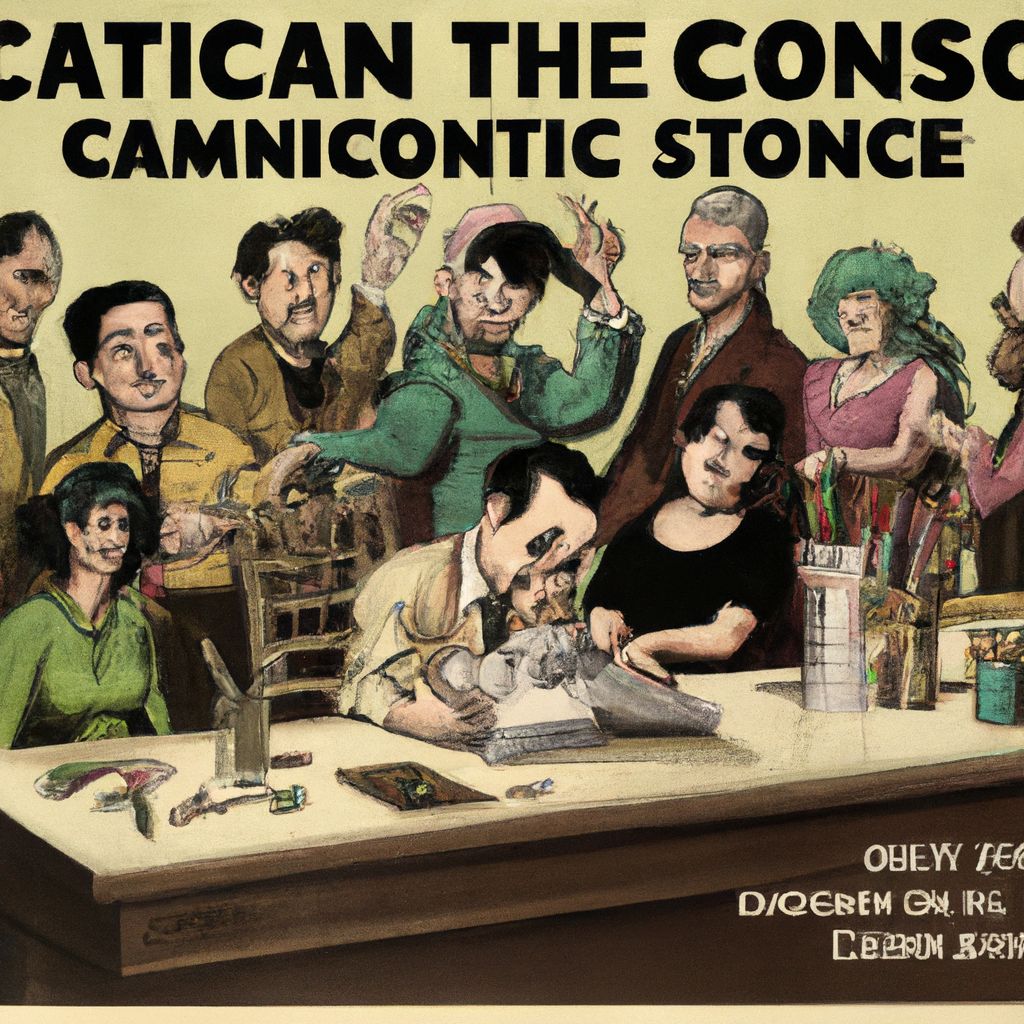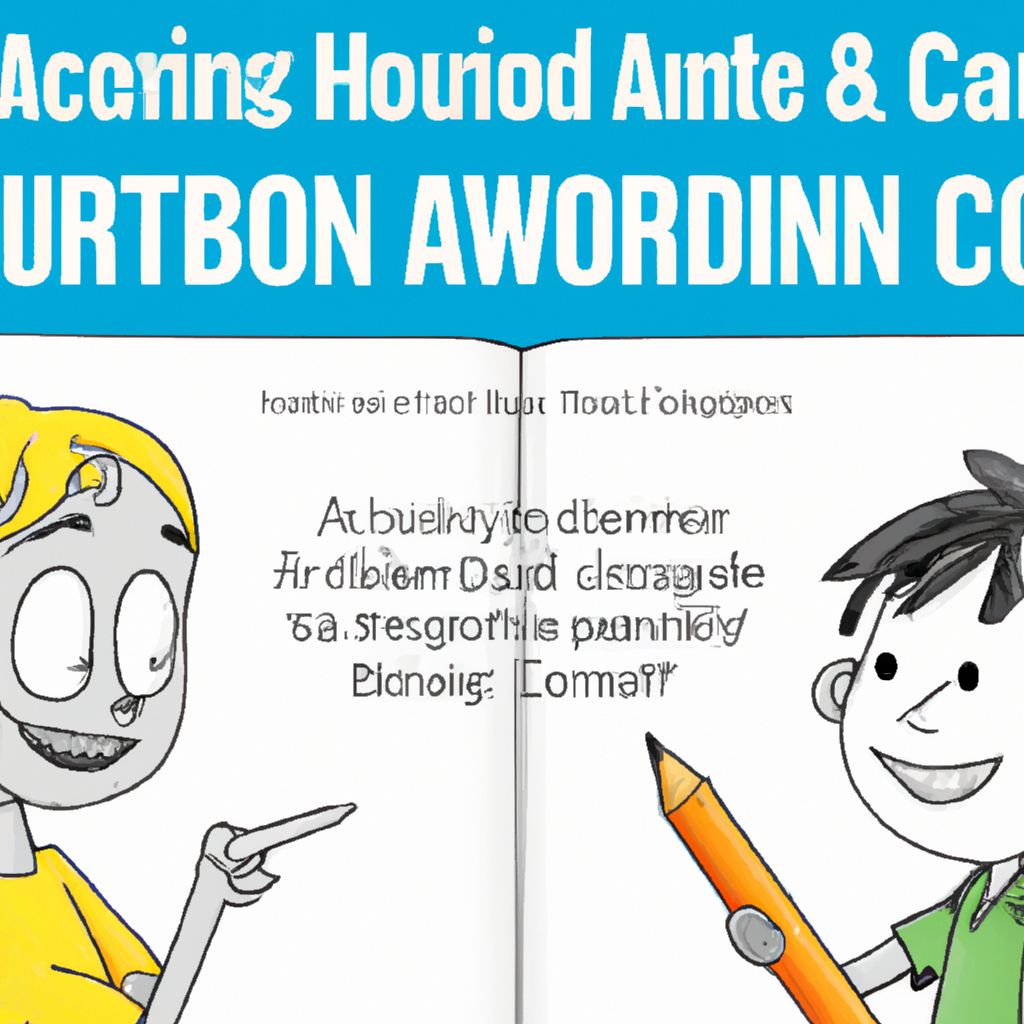- Introduction to Cartooning
- The Art of Cartooning
- The Science of Cartooning
- Tools and Techniques in Cartooning
- Career Opportunities in Cartooning
- Conclusion: The Impact of Cartooning
Introduction to Cartooning

Welcome to the intriguing world of cartooning. Cartooning, by definition, is a form of art that uses simplified designs and caricatures to convey stories, ideas, and messages. It is a unique blend of art and science, which requires both creative skills and a deep understanding of human psychology.
Cartooning has a rich history, with its roots tracing back to ancient times. The earliest forms of cartooning can be seen in cave paintings and Egyptian hieroglyphics. These early cartoons were used as a form of communication and storytelling.
In the modern era, cartoons have become an integral part of the entertainment industry. From comic books and newspapers to animated films and television series, cartoons have found their way into every corner of popular culture. According to a report by Grandview Research, the global animation market size was valued at USD 259.1 billion in 2021 and is expected to expand at a compound annual growth rate (CAGR) of 5.0% from 2022 to 2028.
Cartooning is not just about drawing funny characters; it is about storytelling, satire, social commentary, and entertaining audiences of all ages. It requires a keen understanding of human emotions, expressions, body language, and cultural nuances. This is where the science of cartooning comes into play. As Scott McCloud, a prominent cartoonist and theorist, once said: "Cartooning isn't just a style, it's an approach to the medium, a way of thinking."
So, let's delve deeper into this fascinating world, where art meets science, and explore the various aspects of cartooning.
The Art of Cartooning

The art of cartooning is deeply rooted in the fundamentals of drawing. It starts with understanding basic shapes and forms, mastering line work, and developing an eye for detail. As the famous cartoonist Charles M. Schulz once said, "All you need is a pen and paper."
Character design is a crucial aspect of cartooning. It involves creating visually appealing characters that can effectively portray emotions and personality traits. Famous cartoonists like Walt Disney, Hayao Miyazaki, and Bill Watterson each have their unique character design styles that set them apart.
Another important element is color theory. The use of color in cartoons can evoke certain emotions and set the mood for the story. For instance, warm colors like red and orange can denote energy and passion, while cool colors like blue and green can convey calmness and tranquility.
The composition in cartooning refers to the arrangement of elements within the frame. It guides the viewer's eye and helps in telling the story effectively. A well-composed cartoon can direct the viewer's attention to important details and make the narrative more engaging.
At the heart of cartooning lies creativity and imagination. It's about bending the rules of reality and creating a world that's unique to the cartoonist's imagination. The ability to exaggerate, simplify, and caricature is what makes cartooning an exciting and distinctive form of art.
In essence, the art of cartooning is about bringing characters to life and telling compelling stories through visual imagery. It's a dynamic and continually evolving field that encourages artists to push their creative boundaries.
The Science of Cartooning

The science of cartooning is as integral to the process as the art itself. It's about understanding the principles that make cartoons come alive and resonate with the audience. These principles, often referred to as the 12 Principles of Animation, were introduced by Disney animators Ollie Johnston and Frank Thomas in their book "The Illusion of Life: Disney Animation".
Three key principles among these are timing, , and exaggeration.
- Timing
- Involves the speed at which an action takes place. It plays a crucial role in conveying the weight, size, and personality of a character.
- Motion
- Relates to the movement of characters. Smooth, fluid movements make characters appear more realistic and lifelike.
- Exaggeration
- Is the intentional distortion of reality for comedic or dramatic effect. It enhances the emotional impact and makes the action more compelling.
Beyond the technical aspects, there's also a psychological facet to cartooning. Cartoons, with their vivid colors, exaggerated expressions, and simplified designs, are designed to capture attention and evoke emotions. According to a study published in the Journal of Cultural Research in Art Education, cartoons can significantly impact children's emotional development and social understanding.
Furthermore, cartoons can influence viewers' perception and attitudes. For instance, social and political cartoons play a vital role in shaping public opinion and promoting critical thinking.
In essence, the science of cartooning is about understanding the mechanics behind the art and leveraging psychological insights to create impactful content. It adds depth and realism to cartoons, making them more than just drawings on a page.
Tools and Techniques in Cartooning

In the realm of cartooning, artists have a wide array of tools and techniques at their disposal. These range from the traditional tools like pencils, pens, and paper, to modern digital tools like graphic tablets and software. Each tool has its unique characteristics, and mastering them can significantly enhance your cartooning skills.
Pencils and paper are the basic tools for any cartoonist. They are great for sketching ideas, practicing drawing techniques, and creating preliminary designs. Charles M. Schulz, the creator of Peanuts, famously used a simple pencil and Bristol board for his cartoons.
Ink pens are used for finalizing the drawings and adding details. They come in various tip sizes, allowing for a variety of line widths. Bill Watterson, the cartoonist behind Calvin and Hobbes, used a dip pen and India ink for his works.
With the advent of technology, digital tools have become increasingly popular in cartooning. Graphic tablets allow artists to draw directly onto a computer, offering a vast array of possibilities in terms of colors, textures, and effects.
Software like Adobe Photoshop, Illustrator, and Procreate offer different tools for sketching, coloring, and editing. They allow artists to experiment with styles and techniques, and make changes easily.
Regardless of the tools you choose, the key to effective cartooning is practice. As the famed cartoonist Will Eisner said: "The only way to learn to draw is to draw... and draw... and draw."
Beyond the physical or digital tools, understanding and mastering the principles of design, color theory, and storytelling are vital to creating compelling cartoons. These are the fundamental techniques that will give your cartoons depth and appeal, irrespective of the tools you use.
Career Opportunities in Cartooning

For those who are passionate about cartooning, there are numerous career opportunities available. The demand for skilled cartoonists is high in various industries, including animation, advertising, and publishing.
Animation studios are always on the lookout for talented cartoonists. As a cartoonist in animation, you could work on creating characters, storyboarding, or animating scenes for TV shows, films, and video games. Companies like Disney, Pixar, and DreamWorks are known for their animated films and offer exciting opportunities for cartoonists.
In the advertising industry, cartoonists can work on creating engaging advertisements, promotional materials, and social media content. Their ability to simplify complex ideas and evoke emotions makes them valuable assets in this field.
Publishing companies employ cartoonists for a variety of roles. They can work on creating comic books, illustrating children's books, or making editorial cartoons for newspapers and magazines.
Besides these, the rise of the internet has opened up a world of opportunities for freelance cartoonists. They can work independently, taking up projects from clients across the globe, or create their own content and publish it online. Websites like Patreon and Webtoon allow cartoonists to monetize their work and build a fanbase.
With the right skills and dedication, it's also possible to create your own cartoon series. Successful examples include Matt Groening's "The Simpsons", Trey Parker and Matt Stone's "South Park", and Rebecca Sugar's "Steven Universe".
Regardless of the path you choose, a career in cartooning can be both creatively fulfilling and financially rewarding. As per a report by Payscale, the average salary for a cartoonist/animator in the United States is around $50,000 per year, with the potential to earn much more with experience and success.
Conclusion: The Impact of Cartooning

The impact of cartooning on society and culture is profound. From the simple comic strips in newspapers to the complex animated films in cinemas, cartoons have become an integral part of our daily lives.
Cartoons have the unique ability to communicate complex ideas and emotions in a simplified and engaging manner. They can make us laugh, think, and even shed a tear. As Walt Disney once said, "I would rather entertain and hope that people learned something than educate people and hope they were entertained."
Additionally, cartoons have a universal appeal. They can be enjoyed by people of all ages, from children to adults. They transcend language barriers and cultural differences, making them a truly global form of entertainment.
Moreover, cartoons have a significant educational value. They can introduce children to important life lessons, develop their creativity and imagination, and stimulate their interest in art and storytelling.
On a broader scale, cartoons can influence societal norms and values. They can challenge stereotypes, promote diversity and inclusivity, and encourage critical thinking. Many cartoons, like "The Simpsons" and "South Park", are known for their satirical commentary on social and political issues.
As we continue to explore the art and science of cartooning, we realize that it's much more than just drawing funny characters. It's a powerful medium that can entertain, educate, inspire, and make a difference in the world.






